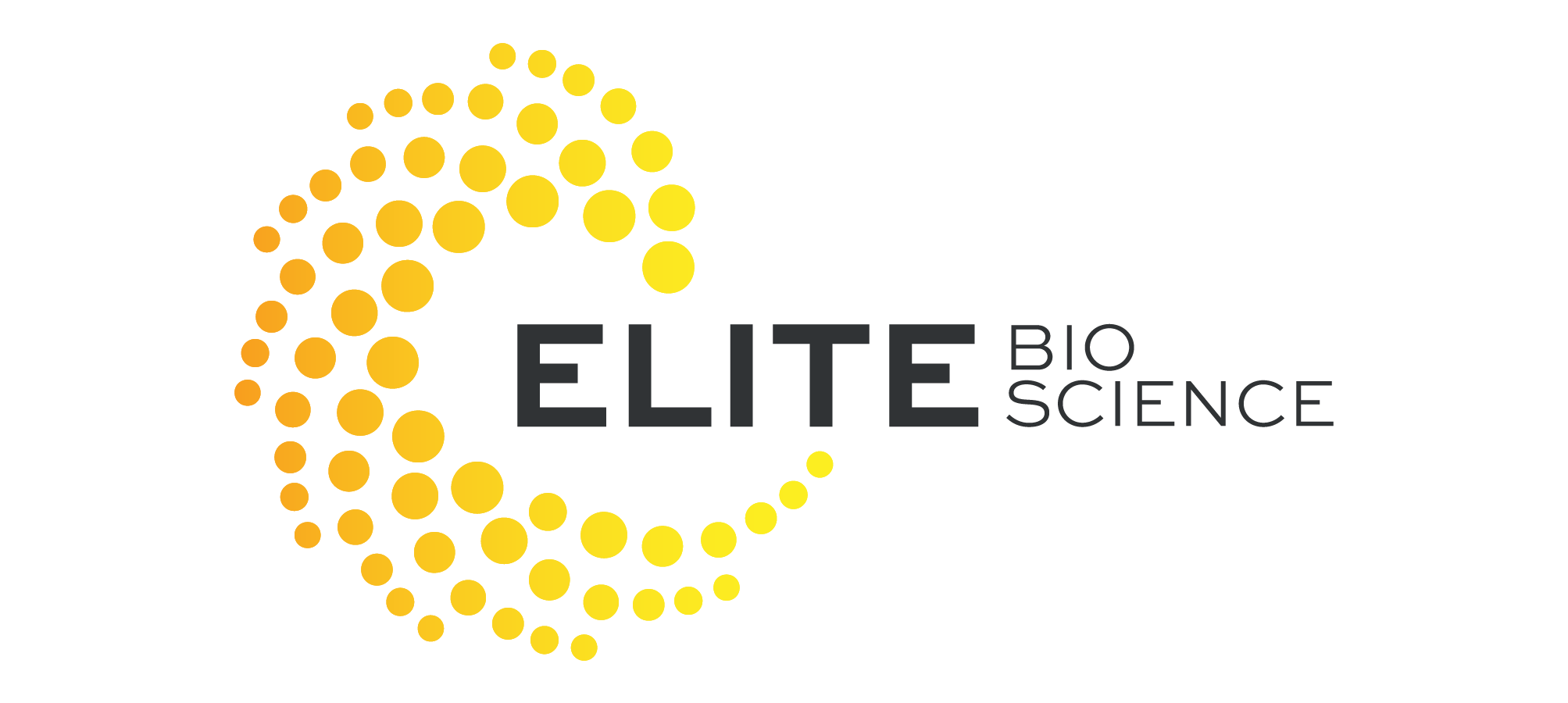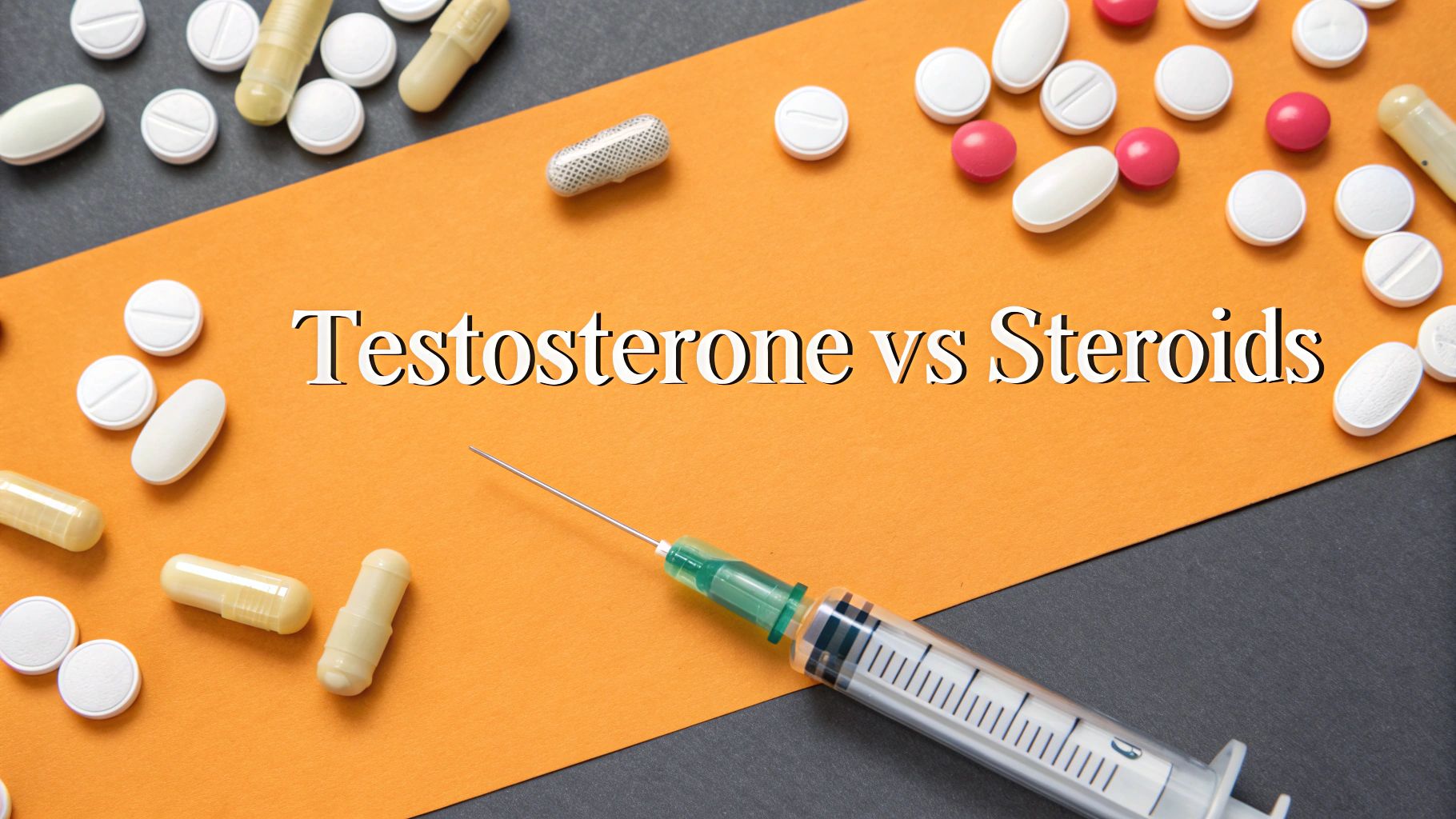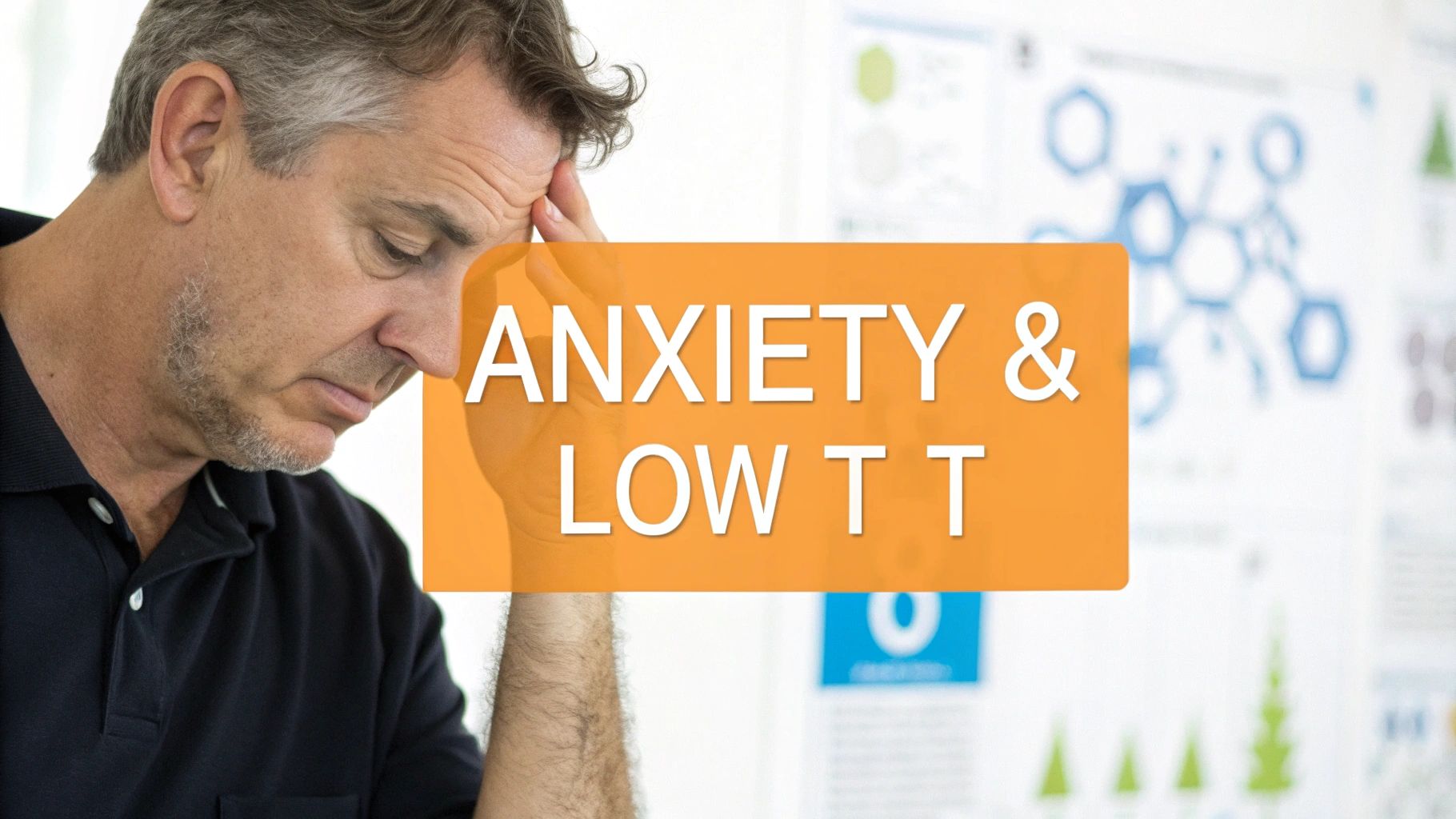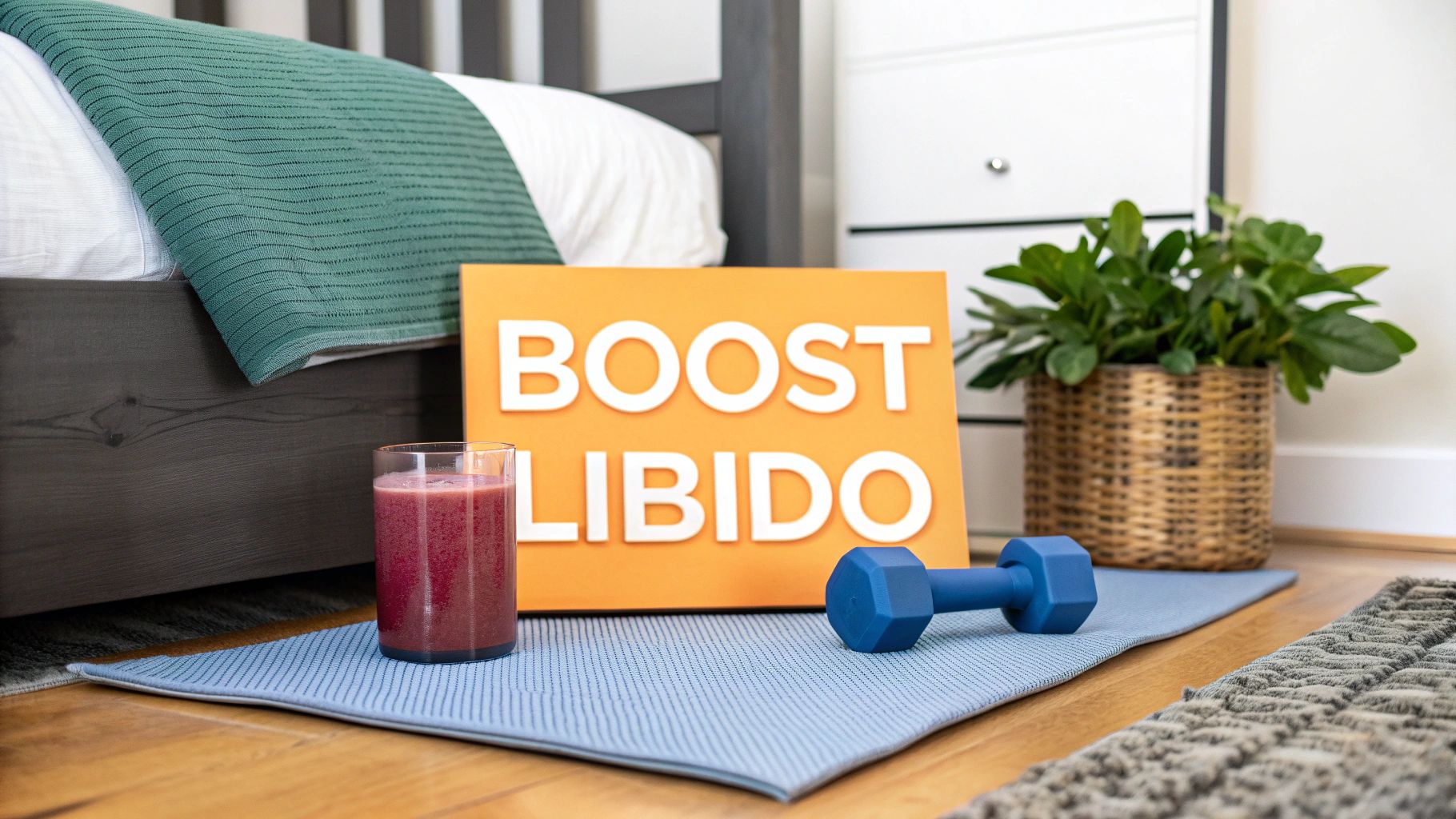What is Bioidentical Hormone Therapy? Benefits & Risks Explained
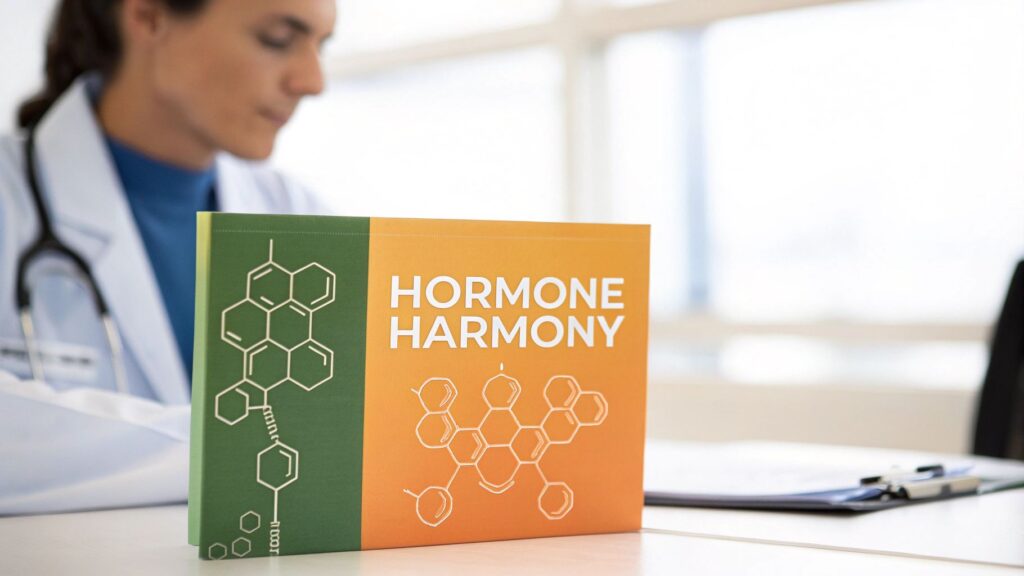
Bioidentical hormone therapy (BHT) works by using hormones that are molecularly identical to the ones your own body makes, helping to restore balance and relieve symptoms.
Think of it like this: your body’s cells have "locks" (receptors), and your natural hormones are the perfect "keys." Bioidentical hormones are precision-cut copies of those keys, designed to fit your cellular locks just as flawlessly. The entire goal is to bring hormones like estrogen, progesterone, and testosterone back to their optimal levels.
A Closer Look at Bioidentical Hormones

To really get what bioidentical hormone therapy is all about, you need to understand the principle behind the term "bioidentical." It’s not about where the hormones come from—they’re often derived from plant compounds—but everything to do with their chemical structure. They are crafted in a lab to be exact replicas of the hormones your body produces.
This structural match is the therapy's defining feature. Because the hormones are identical, your body’s receptors recognize and use them just like they would your own. It’s a completely different approach from traditional synthetic hormones, which have a slightly altered molecular structure. While synthetics can still interact with your cells, their action might not be as precise.
Bioidentical vs. Synthetic Hormones At a Glance
To make the distinction clearer, here’s a straightforward comparison highlighting the fundamental differences between these two types of hormone therapies.
| Feature | Bioidentical Hormones | Traditional Synthetic Hormones |
|---|---|---|
| Molecular Structure | Chemically identical to human hormones. | Structurally different from human hormones. |
| Source | Typically derived from plant sources (like soy or wild yams) and modified to be identical to human hormones. | Often derived from animal sources (like pregnant mare's urine) or created chemically. |
| Body Recognition | Recognized and metabolized by the body in the same way as its own hormones. | May not be recognized or metabolized in the same way, potentially leading to different effects. |
This table shows why the "bioidentical" label matters—it's all about how closely the replacement hormone mirrors what your body would naturally produce.
The Goal of BHT
The main objective of bioidentical hormone therapy is to push back against the effects of hormonal imbalances. As we get older, our hormone production naturally drops off, leading to a whole host of unwelcome symptoms. BHT is designed to supplement these declining levels, tackling the common issues tied to perimenopause, menopause, and andropause.
This treatment is definitely not a one-size-fits-all solution. A qualified practitioner will always start with comprehensive testing to get a clear picture of your specific hormone levels. Based on those results, they create a personalized treatment plan that fits your unique physiological needs. This tailored approach is key to getting effective and safe results.
BHT is about restoring your body's natural harmony. It's less about introducing a foreign substance and more about replenishing what has been lost over time, using a substance your body already recognizes.
This precise method aims to relieve disruptive symptoms and improve your overall well-being. The growing interest in personalized medicine has helped fuel the therapy’s popularity. As a result, the global market for bioidentical hormones, valued at around USD 3.6 billion, is projected to hit approximately USD 6.02 billion by 2033. You can explore more about these market trends in this detailed report about bioidentical hormones.
Key Hormones in Bioidentical Therapy
While every treatment plan is individualized, they often focus on balancing a few key hormones that play crucial roles in how you feel and function day-to-day. These include:
- Estrogen: Responsible for regulating menstrual cycles, maintaining bone density, and supporting skin health and mood.
- Progesterone: Works hand-in-hand with estrogen to support reproductive health, promote a sense of calm, and improve sleep quality.
- Testosterone: Though often linked with men, it is vital for women too, influencing energy levels, libido, and muscle mass.
By bringing these hormones back into their optimal range, BHT aims to resolve symptoms at their very source.
The Key Hormones and What They Do for You

To really get what bioidentical hormone therapy can do, you need to know the key players involved. Think of your hormones as a finely tuned orchestra, with each one playing a critical part in creating a beautiful symphony of well-being. When even one instrument is out of tune, the whole performance suffers.
Bioidentical hormone therapy is all about restoring that harmony by replenishing the "big three" conductors of this orchestra: estrogen, progesterone, and testosterone. These hormones work in concert to regulate countless functions, from your energy and mood to your sleep quality and physical strength. Let's break down what each one does and the vital role it plays.
Estrogen The Master Regulator
Estrogen is so much more than just a reproductive hormone; it’s a powerful regulator that influences nearly every system in your body. It acts like a master multitasker, making sure everything runs smoothly from your brain to your bones. When estrogen levels are balanced, you feel vibrant, focused, and resilient.
But as production declines, especially during perimenopause and menopause, the effects can be widespread and seriously disruptive. The classic hot flashes and night sweats are just the tip of the iceberg.
Common signs of low estrogen include:
- Mood Swings and Brain Fog: Estrogen helps regulate neurotransmitters like serotonin, so a dip can lead to irritability, anxiety, and that frustrating feeling of not being able to concentrate.
- Skin and Hair Changes: It supports collagen production, meaning less estrogen can result in thinner, drier skin and brittle hair.
- Bone Density Loss: Estrogen is crucial for bone strength, and its decline is a primary driver of osteoporosis risk in postmenopausal women.
- Vaginal Dryness: It maintains the lubrication and elasticity of vaginal tissues, so low levels can cause discomfort and painful intercourse.
Recognizing these symptoms is the first step toward getting back in balance. If these issues sound familiar, it’s worth learning more about the specific signs of low estrogen and how they connect to your overall health.
Progesterone The Calming Counterpart
If estrogen is the vibrant, energetic force, progesterone is its calm, steadying partner. The two are meant to work together in a delicate dance. Progesterone’s main job is to counteract estrogen’s stimulating effects, especially on the uterine lining, but its benefits reach far beyond that.
Think of progesterone as your body’s natural relaxation agent. It has a soothing effect on the nervous system, helping to ease anxiety and promote truly restful sleep.
When progesterone levels are optimal, it fosters a sense of tranquility and stability. Many women find that restoring this hormone is the key to quieting a racing mind and finally getting a full night's sleep.
A dip in progesterone often leads to symptoms like insomnia, heightened anxiety, and irregular menstrual cycles. By replenishing it, BHRT helps restore this crucial equilibrium, making you feel more grounded and centered.
Testosterone The Driver of Vitality
Though most people think of it as a male hormone, testosterone is absolutely essential for women’s health, too. It’s the hormone of vitality, responsible for fueling your energy, drive, and strength. In women, testosterone is produced in the ovaries and adrenal glands, just in smaller amounts than in men.
Its decline can leave you feeling perpetually exhausted and unmotivated. Many women are surprised to learn that their persistent low energy and lagging libido are directly tied to not having enough testosterone.
Restoring testosterone to its optimal range can help:
- Boost Energy Levels: Reclaiming the stamina to get through your day without feeling completely drained.
- Enhance Libido: Reigniting sexual desire and responsiveness.
- Improve Muscle Tone: Making it easier to build and maintain lean muscle mass when you exercise.
- Sharpen Mental Focus: Contributing to clearer thinking and a more assertive mindset.
By addressing all three of these key hormones, bioidentical hormone therapy offers a complete approach to restoring your body's natural balance and helping you feel like yourself again.
Your BHT Journey From Start to Finish
Deciding to start bioidentical hormone therapy can feel like a huge step, but once you understand the process, it becomes much less intimidating. This isn't about getting a generic prescription; it's a highly collaborative and personalized experience between you and your healthcare provider, focused on creating a precise plan that fits your body's unique hormonal blueprint.
The entire journey is designed to move methodically from understanding what you're feeling to fine-tuning your treatment for the best possible results. It starts with a real conversation and ends with ongoing support to ensure your long-term wellness.
The Initial Consultation and Symptom Review
Your journey kicks off with a comprehensive initial consultation. This is far more than a quick chat—it’s a deep dive into your health history, your current symptoms, and your goals for feeling better. Your practitioner will want to hear everything you’re experiencing, from hot flashes and brain fog to low energy and poor sleep.
Be ready to talk about your lifestyle, diet, stress levels, and anything else that contributes to how you feel. This conversation gives your provider the essential context needed to start connecting the dots between your symptoms and a potential hormonal imbalance. Honesty and detail are the keys to building a successful treatment foundation.
Comprehensive Hormone Testing
After the consultation, the next critical step is testing. Guesswork has no place in effective hormone therapy, so your provider will order a comprehensive panel of tests to get a clear, data-driven picture of your baseline hormone levels.
This usually involves a blood, saliva, or urine test to measure key hormones like:
- Estradiol (the most potent estrogen)
- Progesterone
- Testosterone (both free and total)
- DHEA and Cortisol (adrenal hormones)
- Thyroid hormones (TSH, Free T3, Free T4)
These results serve as the roadmap for your treatment. For those looking for a convenient way to get started, you can even explore options like an at-home hormone test kit to begin gathering that initial data. The goal is to pinpoint the specific deficiencies or imbalances that need to be addressed.
Creating Your Custom Treatment Plan
Once your test results are in, your practitioner will combine that data with the insights from your initial consultation to create your personalized treatment plan. This is where the "art" of BHT meets the science. Your plan will specify the exact hormones you need, the precise dosages, and the best delivery method for your lifestyle—whether that's a cream, patch, pellet, or capsule.
This stage often involves a specialized compounding pharmacy. These pharmacies are experts at creating custom-formulated bioidentical hormones to the exact specifications prescribed by your doctor. This ensures you get a medication tailored just for you, not a mass-produced, one-size-fits-all product.
The core principle of BHT is personalization. Your treatment plan is designed for your body and your body alone, addressing your unique hormonal needs with precision.
Follow-Up and Fine-Tuning Your Dosage
Starting BHT is just the beginning. Your body will need time to adjust to the new hormone levels, and ongoing monitoring is essential to make sure the treatment is working safely and effectively.
This infographic shows the typical flow from your first meeting to ongoing care.

This visual illustrates that BHT is a structured process involving an initial consultation, personalized dosage creation, and consistent follow-up monitoring.
You'll have regular follow-up appointments, typically a few months after starting and then annually, to discuss your progress and conduct more testing. These check-ins allow your provider to make small adjustments to your dosages, fine-tuning the therapy to maximize benefits and minimize any potential side effects. This iterative process is a hallmark of high-quality hormone therapy and is crucial for achieving lasting results.
Finding the Right BHT Delivery Method for You

How you take your hormones is just as important as the hormones themselves. A truly effective bioidentical hormone therapy plan looks beyond just your hormonal needs—it has to fit your lifestyle, your personal preferences, and the unique way your body absorbs medication. Your provider will work with you to find a delivery method that feels like a natural part of your daily routine while giving you consistent, reliable results.
Think of it like watering a garden. You could use a watering can every day, set up a slow-drip irrigation system, or do a deep watering every few weeks. Each method works, but the best one depends on the specific needs of your plants and the environment they're in. BHT delivery methods are designed with the same flexibility in mind, offering different options to match your need for convenience and hormonal stability.
Topical Creams and Gels
One of the most common ways to take BHT is by applying a cream or gel directly to the skin, usually on the inner arms or thighs. This transdermal approach is a game-changer because it allows the hormones to absorb directly into the bloodstream, completely bypassing the digestive system and liver.
This method is incredibly popular because it’s easy to use and provides steady hormone levels with a simple daily application. The only real catch is that you need to be careful to avoid transferring the cream to others through skin-on-skin contact. Consistency is everything here; a daily dose is what keeps your hormones in perfect balance.
Transdermal Patches
Like creams, patches are applied right onto the skin, delivering hormones straight into your bloodstream. A patch is usually worn for several days at a time before you swap it out for a new one, making it a convenient "set it and forget it" choice for a lot of people.
Patches are great for providing a continuous, slow release of hormones, which helps you avoid the daily hormonal peaks and valleys that can happen with other methods. The main downsides? Some people experience skin irritation where the patch is applied, or find that the patch has trouble staying on, especially if they're very active or swim a lot.
The choice between different transdermal options often comes down to personal preference. Do you prefer a quick daily application, or would you rather apply a patch twice a week and not think about it in between?
Oral Capsules
For some, taking a daily pill is just the most familiar and straightforward option. Bioidentical progesterone is very often prescribed as an oral capsule (you might hear it called micronized progesterone). It’s simple, discreet, and easy to fold into a daily vitamin or medication routine.
When you take hormones orally, they have to pass through the liver before they enter your general circulation. While this is still effective, this "first-pass metabolism" can reduce their potency and may slightly increase certain risks compared to transdermal methods. Because of this, many practitioners prefer transdermal estrogen but will use oral progesterone, which has the added benefit of a calming effect and can even help you sleep when taken at night.
Injections and Pellets
If you’re looking for a dosing schedule that’s less frequent, injections or pellets are fantastic options.
- Injections: Usually given weekly or bi-weekly, injections deliver a precise dose of hormones like testosterone. They work incredibly well but do require you to be comfortable with self-injection or be able to make regular visits to the clinic.
- Pellets: These are tiny, rice-sized implants placed just under the skin (typically in the hip area) during a quick, minor in-office procedure. They slowly release hormones over three to six months, offering the longest-lasting and most consistent hormone levels with almost no daily effort.
Choosing between these really comes down to your comfort level with needles and how often you want to think about your therapy. The sheer convenience of pellets is a huge draw for many people with busy lives.
Comparing BHT Delivery Methods
Deciding on a delivery method can feel overwhelming, but breaking it down by key features makes it much easier. This table gives you a side-by-side look at how each option works, along with its main pros and cons.
| Delivery Method | How It Works | Pros | Cons |
|---|---|---|---|
| Topical Creams/Gels | Applied daily to the skin for direct absorption into the bloodstream. | Easy to use, bypasses the liver, provides steady hormone levels. | Must be applied daily, risk of transference to others, can be messy. |
| Transdermal Patches | A patch worn on the skin releases hormones slowly over several days. | "Set it and forget it" convenience, continuous hormone release, bypasses the liver. | Can cause skin irritation, may not stick well during exercise or swimming. |
| Oral Capsules | A pill is swallowed daily, usually for progesterone. | Familiar and easy, discreet, can aid sleep. | Goes through the liver ("first-pass effect"), may be less potent. |
| Injections | Administered weekly or bi-weekly directly into the muscle. | Highly effective with precise dosing. | Requires comfort with needles, can cause hormonal peaks and troughs. |
| Pellets | Tiny implants placed under the skin that release hormones for 3-6 months. | Longest-lasting option, extremely convenient, provides very stable hormone levels. | Requires a minor in-office procedure for insertion, highest upfront cost. |
Ultimately, your ideal delivery method is one that balances medical effectiveness with your personal lifestyle. Having an open conversation about these options with your healthcare provider ensures your bioidentical hormone therapy plan is one you can actually stick with for long-term success.
Navigating the Benefits and Risks of BHT
Any real conversation about bioidentical hormone therapy has to look at both sides of the coin—the incredible potential and the possible risks. For many, BHT delivers profound relief and a welcome return to vitality, getting to the root cause of hormonal imbalance. But like any medical treatment, it's not without potential side effects, which is why professional guidance isn't just a good idea; it's essential.
Understanding this balance is the key to making an informed, empowered decision about your health. The entire goal is to maximize the life-changing benefits while carefully managing and minimizing any risks through a completely personalized and closely monitored approach.
The Life-Changing Benefits of BHT
When your hormones are guided back into their optimal range, the positive ripple effects can be truly far-reaching, improving both physical and mental well-being. Many people describe it as a significant upgrade in their quality of life, often feeling more like themselves than they have in years.
Some of the most commonly reported benefits include:
- Relief from Menopausal Symptoms: BHT is incredibly effective at dialing down—or even eliminating—classic symptoms like hot flashes, night sweats, and vaginal dryness.
- Improved Cognitive Function: Many people experience a noticeable sharpening of focus, better memory, and a lifting of that frustrating "brain fog" that so often comes with hormonal shifts.
- Renewed Energy and Stamina: Bringing hormones like testosterone back to healthy levels can fight the deep, persistent fatigue that drains motivation and daily productivity.
- Restored Libido: A balanced hormonal profile is absolutely crucial for a healthy sex drive. BHT can help reignite desire and improve sexual satisfaction.
- Better Sleep Quality: By stabilizing key hormones, especially progesterone, many people find they can fall asleep more easily and enjoy deeper, more restorative rest.
- Enhanced Mood and Stability: Getting your hormones in sync can lead to a significant drop in irritability, anxiety, and unpredictable mood swings.
The impact of BHT often goes far beyond just symptom relief. By restoring the body's natural hormonal equilibrium, it supports foundational health, contributing to stronger bones, healthier skin, and an overall greater sense of well-being.
Understanding the Potential Risks and Side Effects
While the benefits are compelling, it’s crucial to have an honest discussion about potential risks. The good news is that most side effects are temporary, usually popping up as your body adjusts to the new hormone levels. More often than not, they can be resolved by simply fine-tuning your dosage with your practitioner.
These initial adjustment side effects might include:
- Bloating or fluid retention
- Breast tenderness
- Headaches
- Mood swings or irritability
- Acne or oily skin
Think of these symptoms as signals from your body that your dosage may need a slight tweak. This is exactly why ongoing monitoring is a non-negotiable part of the process. If you want to dive deeper, you can learn more about managing potential hormone replacement therapy side effects in our detailed guide.
The Non-Negotiable Role of a Skilled Practitioner
The single most important factor in a safe and effective BHT journey is working with a skilled and experienced healthcare provider. Their expertise is what elevates a standard treatment into a personalized therapy designed specifically for your body.
A qualified practitioner is essential for:
- Accurate Diagnosis: They run comprehensive tests to get a precise map of your unique hormonal landscape before a single prescription is written.
- Personalized Dosing: They create a custom-formulated prescription tailored to your specific needs, completely avoiding the risky one-size-fits-all approach.
- Ongoing Monitoring: They schedule regular follow-ups to track your progress, monitor your hormone levels, and make precise adjustments to your dosage as needed.
- Minimizing Risks: Their deep knowledge allows them to anticipate and manage potential side effects, ensuring your treatment remains both safe and effective for the long haul.
Historically, bioidentical hormone therapy has set itself apart by using hormones that perfectly match the body's natural molecular structure, aiming for better integration and fewer side effects than older, synthetic options. This key distinction is reflected in its market growth; the bioidentical hormone sector is forecasted to grow from USD 3.27 billion to over USD 5.35 billion by 2032. This surge underscores the increasing demand for truly personalized hormonal care. You can discover more insights about the hormone therapy market trends on coherentmarketinsights.com.
Ultimately, a successful outcome with BHT is a true partnership between you and your provider, one built on clear communication, precise data, and a shared goal of safely restoring your health and vitality.
Is Bioidentical Hormone Therapy Right for You?
Deciding if bioidentical hormone therapy is the right path is a deeply personal choice. It goes far beyond simply ticking off a list of symptoms; it’s about looking at your complete health picture, your lifestyle, and what you want to achieve. For many people, BHT is the key to getting their energy and vitality back, but it's certainly not a magic bullet for everyone.
Think of this section as a framework to help you decide if a conversation with your healthcare provider is the right next step.
The most common reason people explore BHT is to navigate the often-challenging stages of perimenopause and menopause. If you're dealing with disruptive symptoms like constant hot flashes, drenching night sweats, persistent brain fog, or mood swings that are throwing your life off balance, BHT is a primary treatment to consider. These issues are almost always a direct result of declining hormone levels—the very problem BHT is designed to correct.
Who Is an Ideal Candidate?
Beyond just managing the classic signs of menopause, some people are especially well-suited for this kind of therapy. A good candidate for bioidentical hormones usually fits one or more of these profiles:
- You Have a Diagnosed Deficiency: If proper testing shows your estrogen, progesterone, or testosterone levels are clinically low, BHT offers a direct route to restoring them to an optimal range.
- You Want a Personalized Approach: Many people feel more comfortable with a treatment that’s customized to their specific hormonal needs, rather than a standard, one-size-fits-all prescription.
- You Haven't Found Relief Elsewhere: Some individuals try conventional synthetic hormones and either don’t get the results they want or experience side effects they can’t tolerate. For them, BHT is a logical and worthwhile alternative to explore.
The core idea here is to address a clear, measurable need. BHT works best when it's used to correct a specific, identified hormonal imbalance that's having a real, negative impact on your quality of life.
Who Should Be Cautious?
Just as important is knowing when BHT is not the right choice. Certain health conditions demand serious caution, and a deep dive into your medical history is non-negotiable before starting any hormone therapy. Any responsible practitioner will screen for these contraindications carefully.
You should proceed with caution—or potentially avoid BHT altogether—if you have a personal or strong family history of:
- Hormone-sensitive cancers, like certain types of breast or uterine cancer.
- Blood clots, including deep vein thrombosis (DVT) or a pulmonary embolism.
- A history of heart attack or stroke.
- Undiagnosed or abnormal vaginal bleeding.
- Active liver disease.
Ultimately, this isn’t a decision to make on your own. Our goal is to give you the information you need to have a productive and informed discussion with your healthcare provider. They are the only one who can properly evaluate your symptoms, health history, and lab results to determine if BHT is a safe and effective option for you.
Your Questions Answered
Stepping into bioidentical hormone therapy always brings up a few practical questions. Feeling confident in your decision means getting clear, straightforward answers. Let's walk through some of the most common queries we hear from people considering BHT.
How Long Until I See Results?
This is usually the first thing people want to know, and the honest answer is: it’s different for everyone. Your timeline depends on your unique hormonal landscape, the specific symptoms you're dealing with, and even the delivery method you use. That said, a general pattern often emerges.
Many people start to notice initial, subtle improvements within the first few weeks—maybe sleeping a little more soundly or feeling a slight lift in their mood. More significant changes, like real relief from hot flashes or a noticeable return of your energy, typically become clear within three to six months. That’s the sweet spot where your body has had time to adapt and your hormone levels begin to stabilize.
Is BHT Covered by Insurance?
Navigating the financial side of BHT can be a bit tricky, as coverage varies wildly from one insurance plan to another.
Here’s what you generally need to know:
- FDA-Approved Products: BHT products made by pharmaceutical companies and approved by the FDA are more likely to be covered. Think of common prescriptions like certain estradiol patches or micronized progesterone capsules.
- Compounded Hormones: Custom-formulated hormones, prepared specifically for you by a compounding pharmacy, are often not covered. Because they’re personalized, they don't go through the standard FDA approval process, and many insurers view them as elective or experimental.
Your best bet is to call your insurance provider directly. Ask them specifically about coverage for both the medications and the related consultations and lab work.
How Long Will I Need to Be on BHT?
Bioidentical hormone therapy isn't a short-term fix; it's better to think of it as a long-term management strategy. The whole point is to replenish what your body is no longer making enough of, a process that naturally continues as we age.
Most people stay on BHT for several years to keep symptoms at bay and support their long-term health, such as maintaining bone density. How long you continue is a personal decision you'll make in partnership with your healthcare provider. It involves regular check-ins to reassess your symptoms, goals, and overall health, making sure the benefits always outweigh any potential risks.
Think of BHT less like a course of antibiotics and more like a tool for ongoing wellness. The duration is tailored to your individual health journey, with regular check-ins to ensure the plan remains right for you.
Are Bioidentical Hormones Safer?
The question of safety is, of course, the most important one. The word "safer" is nuanced here because all hormone therapies carry some risk. The advantage of BHT comes from its molecular structure and personalized approach, not from a blanket guarantee of zero risk.
Because bioidentical hormones are chemically identical to the ones your body makes, they’re recognized and processed in a familiar way. This can lead to a more predictable response with fewer side effects compared to synthetic hormones, which have a different structure. But the real key to safety lies in personalized dosing and expert monitoring. Working with a skilled practitioner who bases your treatment on comprehensive testing and adjusts it as needed is the most critical factor for a safe and effective BHT experience.
At Elite Bioscience, we provide the guidance and high-quality therapies you need to restore your body’s balance. Explore our personalized treatment options and take the first step toward reclaiming your vitality.
Discover Your Path to Hormonal Wellness with Elite Bioscience
QUICK SEARCH
Make an account today to start your journey towards a better and healthier lifestyle.
